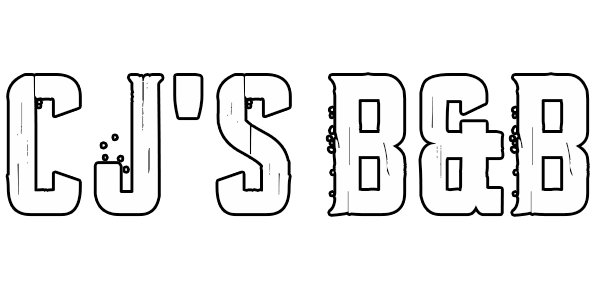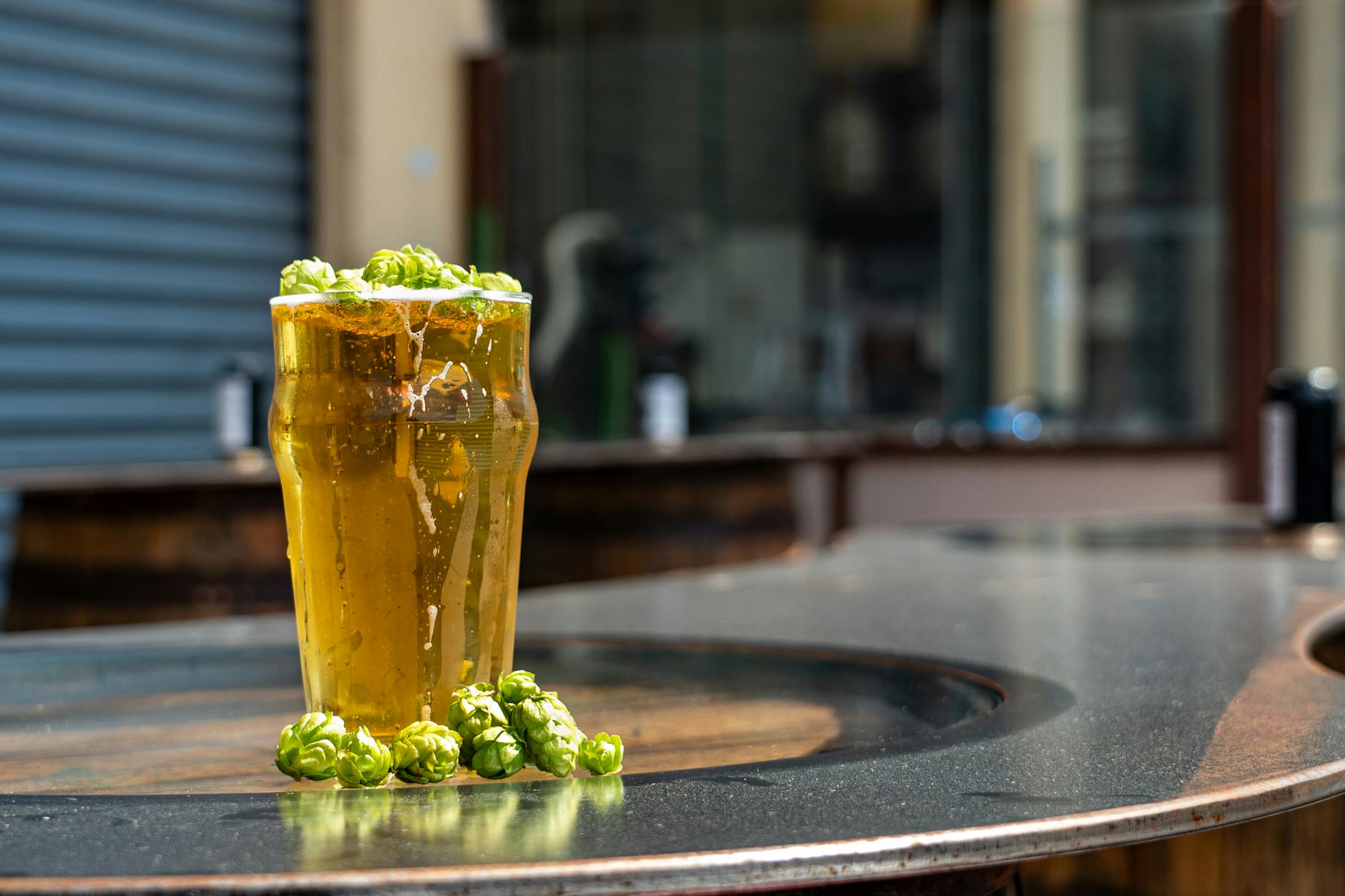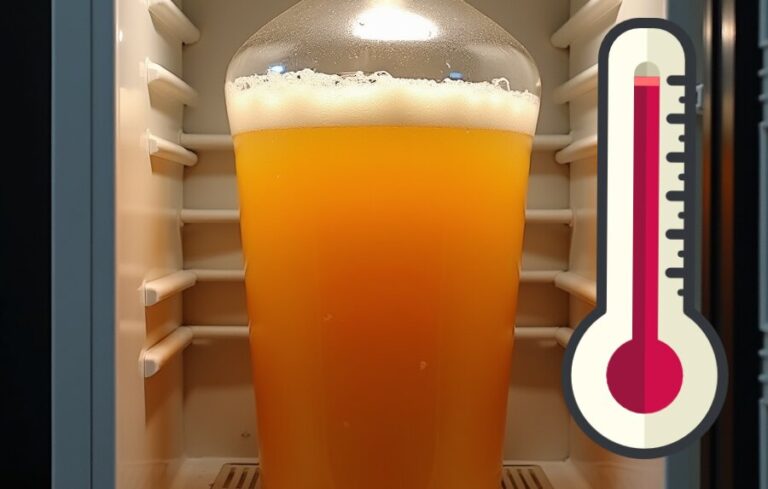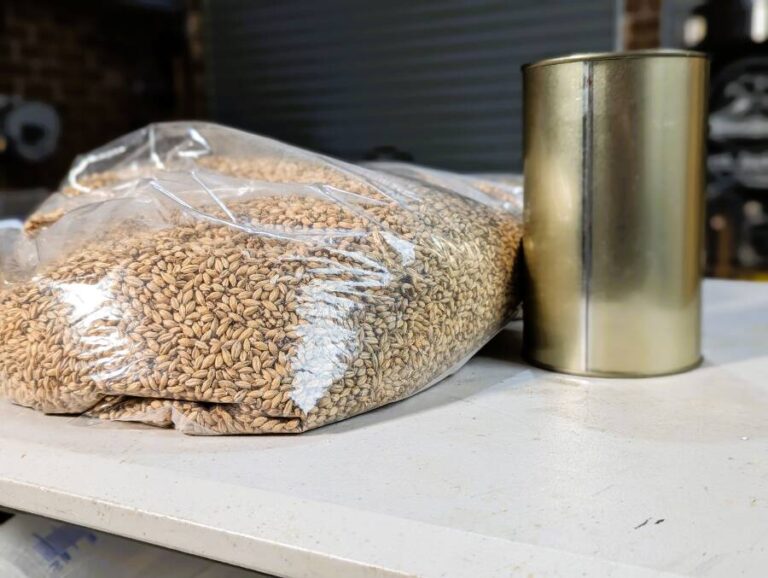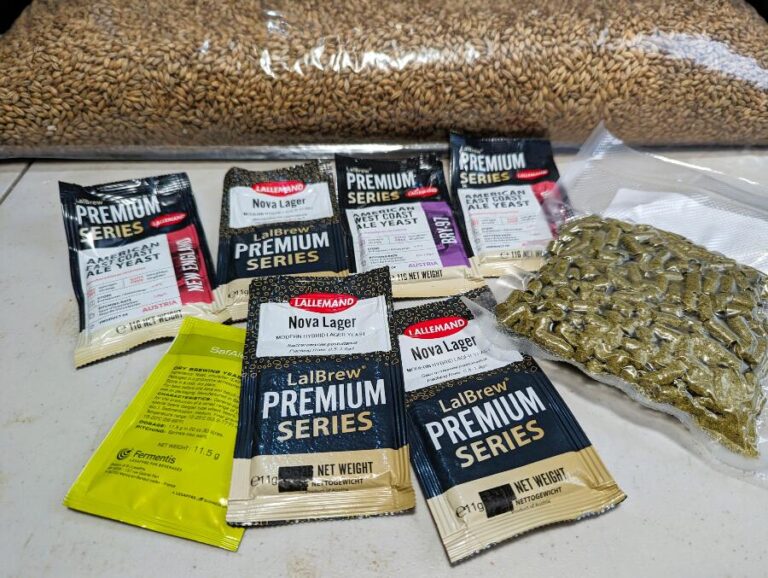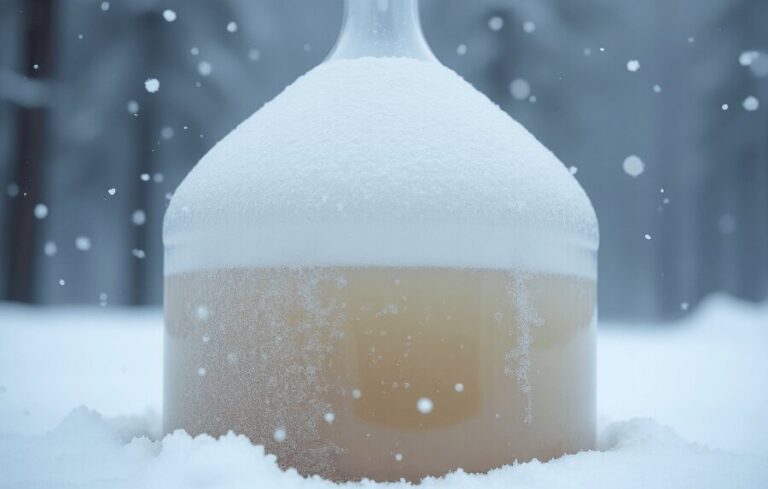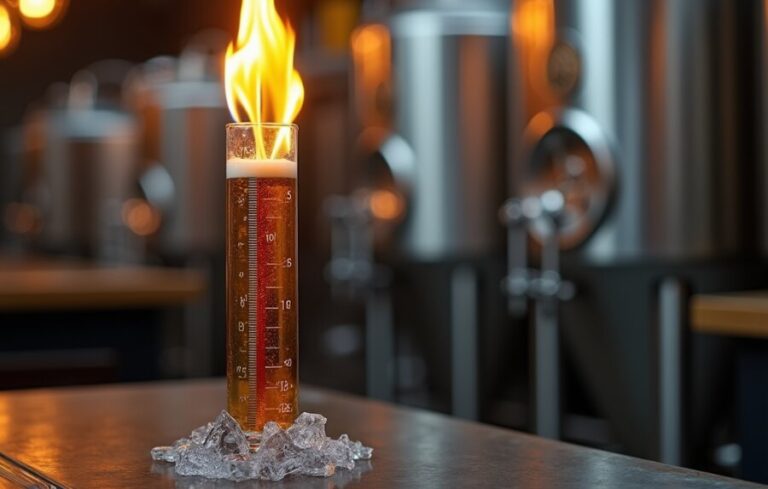Our evaluations and product assessments are conducted using a thorough and unbiased approach. Should you choose to buy any items through our provided links, we might receive a commission Read our disclosures.
Exploring Hop Varieties for Homebrewing
As a homebrewer, choosing the best hops for homebrewing can make all the difference in your beer’s flavor and aroma. Let’s dive into the characteristics of aromatic hops and explore the fruity and citrusy aromas that can elevate your homebrewing adventures.
Characteristics of Aromatic Hops
Aromatic hops are prized for their ability to impart delightful scents and flavors to beer. These hops are typically added later in the brewing process to maximize their aromatic qualities. Here are some common characteristics of aromatic hops:
- Gooseberries: Some hops feature the fresh, tangy aroma of gooseberries.
- Melon: A sweet, fruity scent reminiscent of cantaloupe or honeydew.
- Cassis: A rich, deep berry aroma similar to black currant.
- Chilies and Gazpacho: Unique spicy and vegetal notes that add complexity. (Brew Your Own)
| Hop Characteristic | Description |
|---|---|
| Gooseberries | Fresh, tangy |
| Melon | Sweet, fruity |
| Cassis | Rich, deep berry |
| Chilies | Spicy |
| Gazpacho | Vegetal |
Fruity and Citrusy Hop Aromas
Fruity and citrusy hop aromas can transform a simple homebrew into a vibrant, refreshing beverage. These hops are perfect for creating beers with bright, lively profiles. Here are some key fruity and citrusy aromas to consider:
- Intense Berry: Hops with a berry character, like black currant and gooseberry, offer a sweet yet tart flavor.
- Citrus High Notes: Grapefruit, lemon, and orange aromas add a zesty, tangy aspect to your brew.
- Pineapple: A tropical, juicy scent that pairs well with other fruit-forward notes.
- Pine: Earthy, resinous aroma that balances the fruitiness.
- Tropical Fruit: Aromas like mango and passionfruit bring an exotic touch.
| Fruity/Citrusy Aroma | Description |
|---|---|
| Intense Berry | Black currant, gooseberry |
| Citrus High Notes | Grapefruit, lemon, orange |
| Pineapple | Tropical, juicy |
| Pine | Earthy, resinous |
| Tropical Fruit | Mango, passionfruit |
By understanding these characteristics and aromas, you can select the best hops for your homebrewing projects. For more insights on hop utilization and substitutions, check out our articles on hop utilization in homebrewing and hop substitutions for homebrewing. Happy brewing!
When diving into the world of homebrewing, selecting the right hops is essential for crafting that perfect brew. Here, I’ll explore two popular categories of hop aromas that can elevate your homebrewing adventures.
Intense Berry and Citrus Notes
Certain hops are renowned for their intense berry and citrus characteristics, making them a favorite among homebrewers. These hops bring a unique blend of black currant, gooseberry, and grapefruit aromas, ideal for creating complex and flavorful beers.
| Hop Variety | Berry Aroma | Citrus Aroma |
|---|---|---|
| Citra | ? | ? |
| Amarillo | ? | ? |
| Mosaic | ? | ? |
These hops can be used in a variety of beer styles. For instance, Citra is often used in IPAs for its vibrant citrus notes, while Mosaic offers a mix of berry and tropical fruit flavors, making it versatile for both ales and lagers. Check out our guide on hop flavours in homebrewing for more insights.
Pineapple, Pine, and Citrus Aromas
Another popular category among homebrewers includes hops with pineapple, pine, and citrus aromas. These hops provide a fruit-forward character with floral undertones, adding depth and complexity to your brew.
| Hop Variety | Pineapple Aroma | Pine Aroma | Citrus Aroma |
|---|---|---|---|
| Simcoe | ? | ? | ? |
| Centennial | ? | ? | ? |
| Chinook | ? | ? | ? |
Simcoe is particularly favored for its balanced mix of pine and citrus, making it a staple in American Pale Ales and IPAs. Centennial, known as a “Super Cascade,” offers robust citrus and floral notes, while Chinook provides a hearty pine aroma with a hint of grapefruit.
Understanding these hop varieties and their unique aromas can significantly enhance your homebrewing experience. Whether you prefer the intense berry and citrus notes or the tropical pineapple and pine aromas, selecting the right hops can make all the difference in crafting your perfect brew. For more information on hop substitutions and other varieties, visit hop substitutions for homebrewing.

Types of Processed Hops
When diving into homebrewing, choosing the right hop format can make a significant difference in your beer’s flavor and aroma. Here, I’ll unravel the three main types of processed hops: T-90 hop pellets, fresh (wet) hops, and lupulin powder.
T-90 Hop Pellets
T-90 hop pellets are the most common and widely used form of hops in homebrewing. These pellets are created by grinding whole hop cones into a powder and then pressing them into small, dense pellets. This format is preferred for several reasons:
- Long-Term Storage: The pellet form helps preserve hop flavor and aroma for extended periods.
- Ease of Use: Pellets are easy to measure and add to the brewing process.
- Consistency: They provide consistent hop utilization in homebrewing.
| Feature | T-90 Hop Pellets |
|---|---|
| Preservation | Excellent |
| Ease of Use | High |
| Consistency | High |
For more details on hop utilization, check out our article on hop utilization in homebrewing.
Fresh (Wet) Hops vs. Lupulin Powder
Fresh (Wet) Hops
Fresh hops, also known as “wet” hops, are used right after being picked off the bines. These hops are unkilned and contain about 80% moisture, making them mostly accessible to homebrewers who grow their own hop plants or live in hop-growing regions like the Pacific Northwest.
- Flavor Impact: Fresh hops impart a unique, vibrant flavor that can be hard to replicate with dried hops.
- Availability: Limited to the harvest season and often requires immediate use.
| Feature | Fresh (Wet) Hops |
|---|---|
| Flavor Impact | Unique and vibrant |
| Availability | Seasonal |
| Moisture Content | High (80%) |
Lupulin Powder
Lupulin powder is a more concentrated form of hops, containing significantly more oil and resin compared to T-90 pellets. This results in a product with around twice the potency, reduced astringency, and less vegetative material (Beer Maverick).
- Potency: Approximately twice as potent as T-90 pellets.
- Astringency: Reduced compared to traditional pellets.
- Vegetative Material: Less, leading to a cleaner taste.
| Feature | Lupulin Powder |
|---|---|
| Potency | High |
| Astringency | Low |
| Vegetative Material | Minimal |
Choosing the right hop format depends on your brewing goals and preferences. Whether you’re seeking the long-term storage benefits of T-90 pellets, the unique fresh flavors of wet hops, or the potent impact of lupulin powder, each type offers distinct advantages. For more insights on hop varieties and their flavors, visit our article on hop flavours in homebrewing.
Understanding the Role of Hops in Beer
When I started my homebrewing adventures, I quickly realized that hops play a crucial role in crafting the perfect beer. Their history and variety can be fascinating and understanding their significance can truly elevate my brewing game.
Historical Significance of Hops
Hops have been used in beer since at least the 9th century, but it wasn’t until a few hundred years later in Germany that they became a primary source of bitterness, stabilization, and flavor. Hops provide an antibacterial effect in beer, helping to balance the sweetness of malt with bitterness, flavors, and aromas. This antibacterial property has increased the shelf life of beer, making it a staple ingredient in brewing.
Types of Hops: Aroma, Noble, Bittering, Dual-Purpose
Understanding the different types of hops can help me select the best ones for my homebrewing needs. Here’s a breakdown of the main types:
Aroma Hops
Aroma hops are best used late in the boil or in a dry hop. Their essential oils contribute to fruity and spicy flavors. These hops have low alpha-acid percentages, usually less than 10%, making it challenging to add significant bitterness to beer with them (Beer Maverick).
| Hop Type | Alpha Acids (%) | Usage |
|---|---|---|
| Aroma Hops | <10% | Late Boil/Dry Hop |
Noble Hops
Noble hops, such as Hallertau Mittelfrüh, Saaz, Spalt, and Tettnanger, have a long history in brewing and were used in early European beers. These hops are considered traditional varieties and have been used for centuries.
| Noble Hop Varieties | Usage |
|---|---|
| Hallertau Mittelfrüh | Traditional European Beers |
| Saaz | Traditional European Beers |
| Spalt | Traditional European Beers |
| Tettnanger | Traditional European Beers |
Bittering Hops
Bittering hops are high in alpha acids and are used early in the boil to add bitterness to beer. The bitterness in beer is measured in International Bitterness Units (IBU), with longer boil times resulting in increased bitterness due to isomerization of alpha acids.
| Hop Type | Alpha Acids (%) | Usage |
|---|---|---|
| Bittering Hops | >10% | Early Boil |
For more insight on how to use these hops, check out our article on bittering hops for homebrewing.
Dual-Purpose Hops
Dual-purpose hops can be used both for bittering and for adding aroma to beer. These versatile hops have a balanced profile of alpha acids and essential oils, making them suitable for various stages of the brewing process.
| Hop Type | Alpha Acids (%) | Usage |
|---|---|---|
| Dual-Purpose Hops | 5-15% | Bittering/Aroma |
Understanding these different types of hops helps me to select the best hops for homebrewing, enhancing both the flavor and stability of my beer.
Popular Hop Varieties for Homebrewing
When it comes to homebrewing, selecting the right hop variety can make a significant difference in the final flavor and aroma of your beer. Here are some popular hop varieties that have been highly recommended by fellow homebrewers.
Cascade, Amarillo, Centennial
Cascade
Cascade hops are a staple in the world of homebrewing. Known for their versatility and pleasant aroma, they are often used in a variety of beer styles. Cascade hops impart a floral, citrusy aroma with hints of grapefruit, making them ideal for American Pale Ales and IPAs. According to HomeBrewTalk, Cascade is highly favored for its balanced profile.
| Property | Value |
|---|---|
| Alpha Acids | 4.5% – 7% |
| Beta Acids | 4.5% – 7% |
| Common Uses | Pale Ales, IPAs |
Amarillo
Amarillo hops are another favorite among homebrewers. They are known for their unique flavor profile, contributing a mix of floral, citrus, and tropical fruit notes. Amarillo hops are particularly popular for their ability to add complexity to IPAs and Pale Ales. Members on HomeBrewTalk frequently mention Amarillo for its standout aroma and flavor.
| Property | Value |
|---|---|
| Alpha Acids | 8% – 11% |
| Beta Acids | 6% – 7% |
| Common Uses | IPAs, Pale Ales, Wheat Beers |
Centennial
Centennial hops are often referred to as a “super Cascade” due to their similar but more intense aroma and flavor profile. They are dual-purpose hops, making them suitable for both bittering and aroma. Centennial hops are known for their floral and citrus notes with a touch of pine. Homebrewers on HomeBrewTalk appreciate Centennial for its versatility in various beer styles.
| Property | Value |
|---|---|
| Alpha Acids | 9.5% – 11.5% |
| Beta Acids | 3.5% – 4.5% |
| Common Uses | IPAs, Pale Ales, Stouts |
Simcoe, Citra, Saaz
Simcoe
Simcoe hops are known for their complex aroma, featuring earthy, piney, and fruity notes with a hint of berry. These hops are often used in IPAs and other hop-forward beer styles. Simcoe is favored for its ability to add depth and complexity to the brew. Homebrewers have highlighted Simcoe on HomeBrewTalk as a versatile choice for various recipes.
| Property | Value |
|---|---|
| Alpha Acids | 12% – 14% |
| Beta Acids | 4% – 5% |
| Common Uses | IPAs, Pale Ales, Porters |
Citra
Citra hops are celebrated for their intense citrus and tropical fruit aromas, including lime, grapefruit, and passion fruit. They are a popular choice for IPAs and other aromatic beer styles. The high oil content in Citra hops makes them excellent for dry hopping, adding vibrant flavors and aromas to the beer. Homebrewers on HomeBrewTalk often recommend Citra for its bold character.
| Property | Value |
|---|---|
| Alpha Acids | 11% – 13% |
| Beta Acids | 3.5% – 4.5% |
| Common Uses | IPAs, Pale Ales, Hazy IPAs |
Saaz
Saaz hops are one of the noble hop varieties, known for their mild and earthy aroma with hints of spice. They are commonly used in traditional European lagers and Pilsners. Saaz hops provide a subtle but distinctive flavor that complements malt-forward beers. Homebrewers on HomeBrewTalk appreciate Saaz for its historical significance and classic profile.
| Property | Value |
|---|---|
| Alpha Acids | 3% – 5% |
| Beta Acids | 4% – 5% |
| Common Uses | Lagers, Pilsners, Belgian Ales |
For more insights on selecting the best hops for your homebrewing adventures, check out our articles on hop flavours in homebrewing and hop substitutions for homebrewing.
Selecting Hops for Different Beer Styles
When it comes to homebrewing, selecting the right hops can be a game-changer. Different beer styles benefit from different hop varieties, and understanding these nuances can elevate your brewing adventures.
European vs. American Hops
European and American hops offer distinctive characteristics that cater to different beer styles. European hop varieties like Hallertau, Tettnanger, and Saaz are often described as elegant, herbal, floral, and spicy. These qualities make them ideal for traditional European beer styles, such as lagers and pilsners (Pat’s Pints).
| European Hops | Characteristics | Best Used For |
|---|---|---|
| Hallertau | Herbal, Floral, Mild Spicy | Lagers, Pilsners |
| Tettnanger | Earthy, Spicy, Mild Floral | Belgian Ales, Lagers |
| Saaz | Mild, Earthy, Herbal | Czech Pilsners, European Lagers |
On the other hand, American hop varieties like Cascade and Centennial are known for their higher levels of essential oils, which contain molecules such as myrcene, linalool, nerol, geraniol, citral, and limonene. These compounds impart fruity, floral, and citrusy aromas, making American hops a popular choice for IPAs and other hop-forward styles (Pat’s Pints).
| American Hops | Characteristics | Best Used For |
|---|---|---|
| Cascade | Citrus, Floral, Fruity | IPAs, Pale Ales |
| Centennial | Floral, Citrus, Pine | IPAs, American Ales |
| Simcoe | Earthy, Pine, Berry | IPAs, Pale Ales |
For a deeper dive into the different hop flavors, check out our article on hop flavours in homebrewing.
Choosing Hops for Lager Brewing
Lagers, particularly European pale lagers, benefit from specific hop varieties that contribute to their clean, crisp profile. German hops like Saaz, Tettnanger, Spalter, Hallertauer Mittelfrüh, Hersbrucker, and Strisselspalt are highly recommended for lagers due to their landrace attributes and higher levels of auxiliary bitterness compounds (ABC). These compounds help reduce the lingering character of bitterness in beer (Beer and Brewing).
| Hop Varieties for Lagers | Attributes | Reason for Use |
|---|---|---|
| Saaz | Mild, Herbal, Earthy | Clean bitterness, subtle aroma |
| Tettnanger | Spicy, Floral, Earthy | Delicate bitterness, balanced aroma |
| Hallertauer Mittelfrüh | Mild Spice, Floral | Smooth bitterness, elegant aroma |
When brewing lagers, I always ensure to choose hops that enhance the subtlety and balance of the beer. For more tips on hop utilization, visit our guide on hop utilization in homebrewing.
By understanding the distinct characteristics of European and American hops, and selecting the right varieties for lagers, you can craft a delicious homebrew that captures the essence of each beer style. For guidance on substituting hops in your recipes, see our article on hop substitutions for homebrewing.

